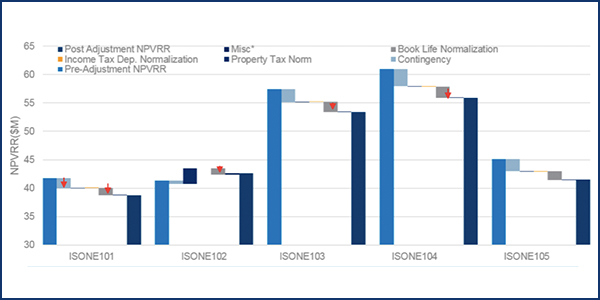By Michael Kuser
ISO-NE Director of Transmission Planning Brent Oberlin presented a revised draft of the competitive transmission request for proposals template at a teleconference meeting of the Planning Advisory Committee on Thursday.
The RTO plans to issue its first RFP for a competitively developed transmission solution under ISO-NE Planning Advisory Committee Briefs: June 19, 2019.)
The materials provided — including general instructions and related workbooks — focus on a solicitation for a reliability transmission upgrade or a market efficiency transmission upgrade.
To submit proposals, respondents will use RFP360, a web-based application the RTO uses to communicate with the respondents and to collect responses.
“‘Make sure there’s a controlled environment.’ That’s one of the lessons we’ve learned from other areas,” Oberlin said.
The RTO has drafted similar documentation for an RFP for a public policy transmission need, but it has not yet published it, he said.
Oberlin described the lifecycle cost workbook as “a monster,” saying “it takes a while to open, so don’t touch anything while it’s opening or you’ll regret it.”
The RTO has posted an unlocked version of the lifecycle cost workbook for review.
Comments on this latest draft of the RFP materials should be submitted to pacmatters@iso-ne.com by Aug. 5.
Refined Accuracy
Responding to a question from Eversource Energy, Oberlin said ISO-NE is “going to be pushing the bounds” on cost estimate accuracy and hopes that “everyone is in at least the plus 50%, minus 25% range.”
“Our desire would be to actually be a lot tighter than that; plus/minus 10% would really be the goal, because we don’t want to revisit this in the future,” Oberlin said.
Between phases 1 and 2 of the application process, the RTO asks for additional information to better understand the project and “really dig in on the nuts and bolts,” he said.
“It is not a time for the respondent to be changing the design of the project,” Oberlin said. “We shouldn’t see night-and-day changes in the estimate between those two stages, so we are looking for a fairly refined accuracy right up front.”
Respondents can also provide their own workbook with an explanation of why they do things differently, he said.
Lawrence Willick of New England Energy Connection asked about the period for lifecycle costs, and how the RTO would reconcile project components of varying lifetimes.
Oberlin said it is assuming 15 years for the base lifecycle and that it would be up to the RTO to understand the varying lifecycles of installed components.



